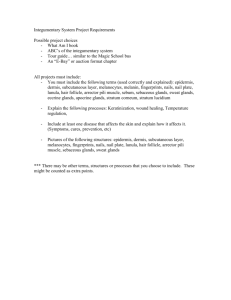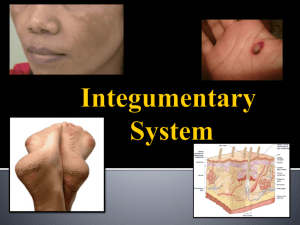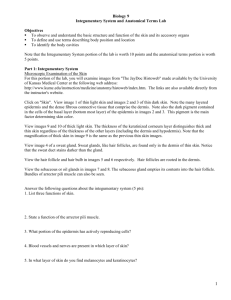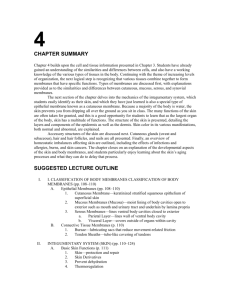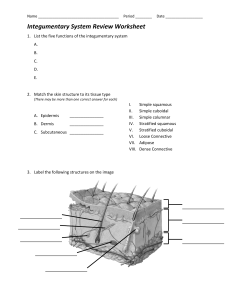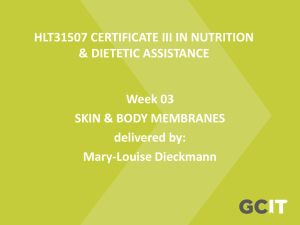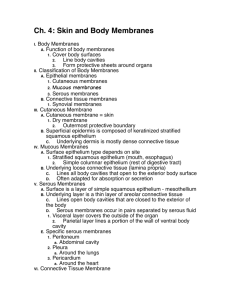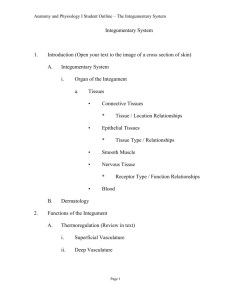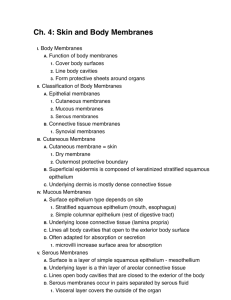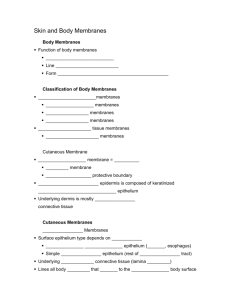ch.6
advertisement
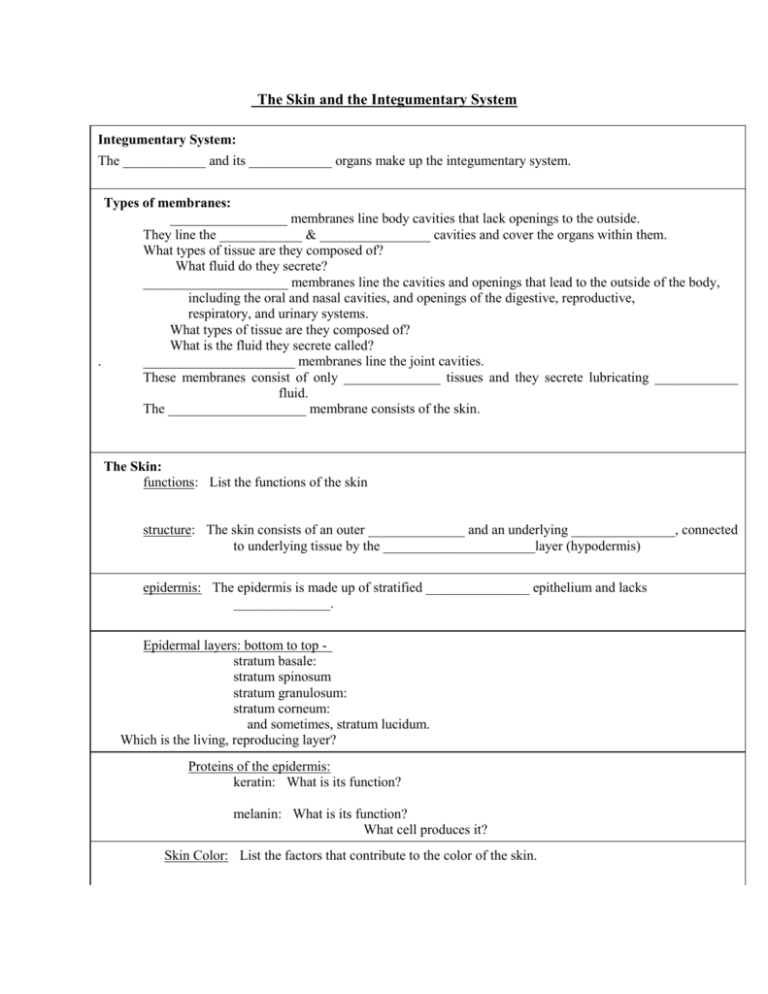
The Skin and the Integumentary System Integumentary System: The ____________ and its ____________ organs make up the integumentary system. Types of membranes: _________________ membranes line body cavities that lack openings to the outside. They line the ____________ & ________________ cavities and cover the organs within them. What types of tissue are they composed of? What fluid do they secrete? _____________________ membranes line the cavities and openings that lead to the outside of the body, including the oral and nasal cavities, and openings of the digestive, reproductive, respiratory, and urinary systems. What types of tissue are they composed of? What is the fluid they secrete called? . ______________________ membranes line the joint cavities. These membranes consist of only ______________ tissues and they secrete lubricating ____________ fluid. The ____________________ membrane consists of the skin. The Skin: functions: List the functions of the skin structure: The skin consists of an outer ______________ and an underlying _______________, connected to underlying tissue by the ______________________layer (hypodermis) epidermis: The epidermis is made up of stratified _______________ epithelium and lacks ______________. Epidermal layers: bottom to top stratum basale: stratum spinosum stratum granulosum: stratum corneum: and sometimes, stratum lucidum. Which is the living, reproducing layer? Proteins of the epidermis: keratin: What is its function? melanin: What is its function? What cell produces it? Skin Color: List the factors that contribute to the color of the skin. dermis: The dermis consists of _________________ tissue with collagen and elastic fibers within a gel-like ground substance. The dermis also contains nerve fibers, sensory fibers, hair follicles, sebaceous glands, and sweat glands. Subcutaneous Layer: What is this layer composed of? What are the functions of this layer? Accessory structures: hair: Where can hair be found? Define the term hair follicle? What is the function of the arrector pili muscle? What determines hair color? Glands of the integumentary system: sebaceous glands: What type of glands are they? What structure are they associated with? What is their secretion called? sudoriferous glands (sweat glands): appocrine are associated with _____________________ control and secrete ____________ eccrine are associated with ___________________________. ceruminous glands are found in the ______________ and secrete ________________ nails: Nails consist of stratified ______________________epithelial cells overlying the nail bed, with the ____________________ as the most actively growing region of the nail root. Temperature regulation: Proper temperature regulation is vital to maintaining metabolic reactions. The ____________plays a major role in temperature regulation with the ________________ controlling it. Active cells, such as those of the heart and skeletal muscle, produce ______________. Heat may be lost to the surroundings from the skin. The body responds to excessive heat by ____________of dermal blood vessels and ______________. The body responds to excessive cooling by _______________ dermal blood vessels, inactivating ___________________ glands, and increasing muscle usage through ___________________. Healing of Wounds and Burns Inflammation, in which blood vessels _______________ and become more _________________, causing tissues to become red and swollen, is the body's normal response to injury. . Superficial cuts are filled in by reproducing _____________ cells. . Deeper cuts are closed off by __________________, covered by ________________, and eventually filled in by _____________________, making connective tissue. Then what happens? Large wounds leave scars and healing may be accompanied by the formation of _____________________.


